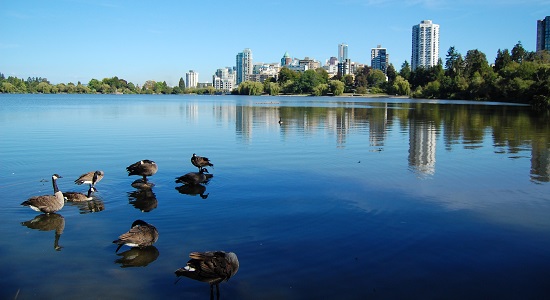
Restoring Vancouver’s Lost Lagoon
 At the edge of Vancouver’s iconic Stanley Park, Lost Lagoon is a highly recognized feature of the city’s landscape—a place for strolling, bird watching or just spending time. But it hasn’t always existed in its current manicured form.
At the edge of Vancouver’s iconic Stanley Park, Lost Lagoon is a highly recognized feature of the city’s landscape—a place for strolling, bird watching or just spending time. But it hasn’t always existed in its current manicured form.
Until 1917, this region was a fully functioning intertidal wetland connected to Burrard Inlet. It supported local fish with eel grass beds for nurseries, provided food and shelter for over-wintering migratory waterfowl, and supplied local Musqueam, Squamish and Tsleil-Waututh peoples with clams and household materials. That all changed when the causeway to Stanley Park and Lions Gate Bridge separated the lagoon from Cole Bay.
Over the next year, SER-WC Board member June Pretzer is undertaking a case study of Lost Lagoon—part of a broader exploration into how ecosystem services can be incorporated into restoration planning and design. Nature provides our food, protects us from floods, pollinates our orchards, sequesters carbon dioxide and produces the air we all breathe, says Pretzer, so it’s vitally important that we protect and conserve biodiversity and the conditions that support those ecosystem services.
Pretzer’s study aims to develop a clearer method to assess ecosystem services and translate that into quantifiable measures for restoration design. It will consider how Lost Lagoon’s reduced biodiversity has made it less resilient than in its natural state, and how restoration efforts could re-establish the natural coastal features and ecosystem services the lagoon once provided. For example, inundation of salt water through new channels is being considered, as are efforts to increase biodiversity—currently, fish species are restricted to common carp, bullheads and stickleback.
The results of this case study could well offer guidance to land planners, as coastal conditions change in response to forecasted sea level rise. The study could also serve as a trial for using applied ecosystem service tools, such as InVEST, MIME, ARIES, and TESSA, to determine ease of use, appropriate degree of application and monetary evaluations.
